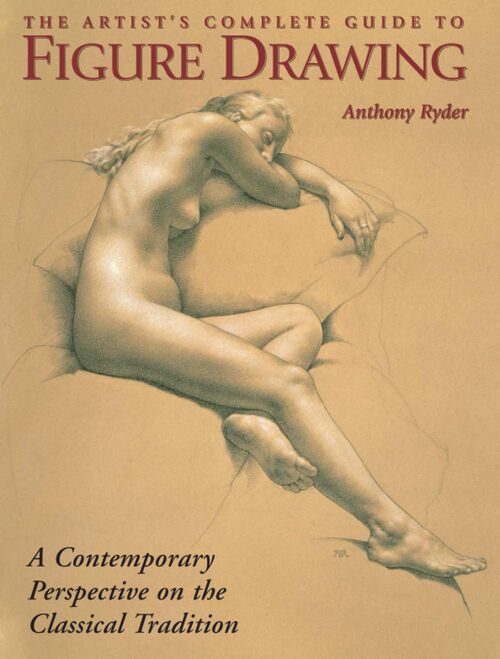❤️ Coliva, Anna, and Andrea Bacchi. Bernini. Milan: Officina Libraria, 2017.

Out of Print
Lorenzo Bernini ranks as my favorite sculptor. This book brims with striking photos and detailed descriptions of his works. However, I haven’t read writings by art historians or critiques featured in the text.
❤️ Delavier, Frédéric. Women’s Strength Training Anatomy. Champaign, IL: Human Kinetics, 2003.

This book follows the style of Delavier’s earlier work. For more details, see my review of Strength Training Anatomy.
❤️ Delavier, Frédéric. Strength Training Anatomy. 3rd ed. Champaign, IL: Human Kinetics, 2010.

This weight training book showcases beautiful écorchés for each weight-training exercise. The illustrations depict muscles from various, sometimes extreme, perspectives. They clarify the shapes of both active and inactive muscles. The book is filled with useful information on weight training and even includes an excellent écorché drawing of Farnese Hercules.
🙅 Faragasso, Jack. Mastering Drawing the Human Figure: From Life, Memory, Imagination. New York: Stargarden Press, 1998.

Not recommended. While it might offer some insights into Reilly rhythms, the quality of the drawings and the writing leaves room for improvement. If you are specifically interested in Reilly rhythms, you may want to explore other resources. For instance, Watts Atelier offers excellent classes on the subject.
Gottsegen, Mark David. The Painter’s Handbook: Revised and Expanded. New York: Watson-Guptill Publications, 2006.

I enjoy this book as a supplementary, up-to-date reference alongside other technical guides like the Artists’s Handbook by Mayers on fine art materials and techniques. Although its layout can feel busy, there’s plenty to explore and satisfy your curiosity.
❤️ Hale, Robert Beverly, and Terence Coyle. Anatomy Lessons from the Great Masters: 100 Great Figure Drawings Analyzed. New York: Watson-Guptill Publications, 2000.

Highly recommended for deepening your understanding of human anatomy, this book offers exceptional insights through detailed illustrations and commentary. The authors pair original works with clear anatomical line drawings, providing explanations that clarify the structure shown in each drawing. I often revisit this dense resource, and each reading reveals new insights into artistic anatomy.
Andrew Loomis. Creative Illustration. London: Titan Books, 2012.

This book may not be as popular as Loomis’s other titles. I like it because it gives clear drawing tips. It shows a classic American illustration style.
❤️ Mayer, Ralph. The Artist’s Handbook of Materials and Techniques. 5th ed., rev. and updated. New York: Viking Penguin, 1991.

A must-have for anyone seeking a deep understanding of how pigments and art materials function. This highly technical reference, while somewhat dated in its coverage of newer pigments, remains a comprehensive and authoritative resource on the majority of pigments and techniques still in common use.
Mollica, Patti. Color Theory: An Essential Guide to Color-from Basic Principles to Practical Applications. United Kingdom: Walter Foster Publishing, 2013.

Beginner friendly, lots of examples and tips. I don’t consider this a part of the core collection.
❤️ Morrall, Andrew. Rubens. The History and Techniques of the Great Masters. London: Tiger Books International, 1988.
While not as technical as the National Gallery Technical Bulletins, this book provides an excellent survey of Rubens’s paintings, accompanied by accessible explanations of his techniques for each work. The inclusion of high-quality close-ups enhances the reading experience, making it a valuable and approachable resource.
❤️ Mogilevtsev, V. A. Drawing Samples for Copying. Saint Petersburg: 4art, 2016.
Highly recommended. This book gathers three centuries of stellar academic drawings—masterful studies by Repin, Surikov, and other art greats. You’ll see close-up details that reveal each artist’s technique. It’s worth every penny.

❤️ Payne, Edgar Alwin. Composition of Outdoor Painting. United States: DeRu’s Fine Arts, 2016.
Highly recommended. The book offers great insights. Although it focuses on landscape painting, I found its information applicable to figure and portrait works as well. It also lends itself well to still-life painting. I appreciate the systematic writing style throughout.

❤️ Ryder, Anthony. The Artist’s Complete Guide to Figure Drawing: A Contemporary Perspective on the Classical Tradition. New York: Watson-Guptill, 1999.

I really enjoy this book. It is comprehensive and offers excellent insights into the drawing process. Although it focuses on graphite, many of its techniques apply to other drawing mediums, including the preparatory stages of painting. While the book covers foundational techniques, it is advanced and may initially challenge new artists. However, like me, you might find it increasingly valuable with each revisit.
Slive, Seymour. Rembrandt Drawings. Los Angeles: J. Paul Getty Museum, 2019.

A great collection of Rembrandt Drawings.
Vanderpoel, John H.. The Human Figure. United Kingdom: Dover Publications, 1958.

I like this book, but I don’t love it—though many do. My main complaint is that the illustrations are too small and lack sufficient contrast. This issue makes them less useful as a go-to reference in various lighting conditions. Overall, it’s a great addition to a collection, but it doesn’t add significant extra value for me.
Whistler, Catherine. Raphael: The Drawings. Oxford: Ashmolean Museum, 2017.

This is a great book of Raphael’s work. I really enjoy it.
❤️ Zarins, Uldis, with Sandis Kondrats. Anatomy for Sculptors: Understanding the Human Figure. 3rd ed. Riga, Latvia: Anatomy Next, Inc., 2014.
Highly recommended. Although this book focuses on sculpting, its approach to the human form makes it valuable for painters as well. It depicts the figure in simplified forms similar to Bridgman’s work, yet rendered with modern 3D modeling techniques. Keep in mind that it serves as a technical reference and does not offer the detailed anatomical insights found in Goldfinger. I appreciate it for its compact, accessible guidance.
❤️ Zarins, Uldis. Form of the Head and Neck: Anatomy for Professional Artists. Riga, Latvia: Anatomy Next, Inc., 2021.
Highly recommended. See my review for Anatomy for Sculptors: Understanding the Human Figure. This book shares a similar approach, packed with useful illustrations that help clarify the forms of the head and neck.